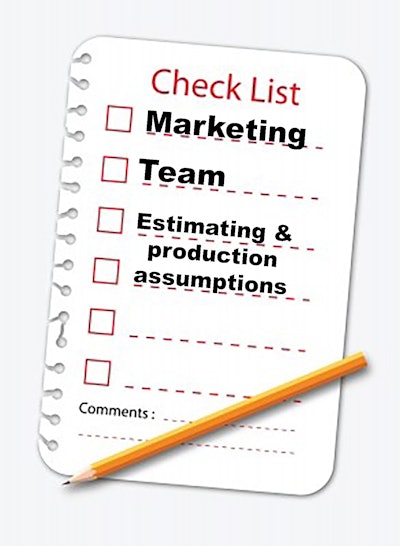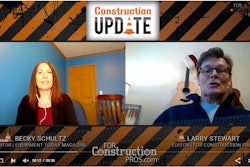
Working on the business takes deep concentration and undistracted attention. Those conditions are not likely to present themselves during the season. For that reason it is imperative to make the most of your off-season by completing all the business building activities that have been on your to-do list the last several months.
The three most important off-season activities are redoubling your marketing and sales efforts, tweaking your estimating and production management assumptions based on your job costs, and improving your team.
Back in the day when I was working for the management consulting firm we warned our new clients that once we got our hands on them they were likely to work harder in the off-season than they did during the season. Although my approach is gentler now than it was in those days I still press my clients to make good use of this free time.
To kick things off, here is a partial list of the items you should be working on during the winter (of whenever your off-season hits):
- Get your tools, materials and equipment organized.
- Return your tools and equipment to like-new condition.
- Analyze last year’s data (job costing, financial, etc)
- Reconnect with former clients
- Research your market for new trends and niches
- Tweak your estimating factors
- Enhance your marketing message and material
- Re-energize yourself
- Train your staff
- Create next year’s budget
Most importantly, improve how you conduct business. Analyze and refine your business’ systems and processes. Figure out which areas are the weakest and costing you the most money. Dig into them. Question every assumption you’ve been using about why the process has to be done the way it always has been done.
Update your marketing message
Contractors rarely update their marketing message. They create one during the foundation of the business and stick with it forever. Tweak your pitch and message as your customer base and market evolve. At least once a year take a step back. Look at the way your business is being presented to the world. Look at how your competition is presenting theirs.
In today’s world, you need to keep your website up to date. Check out the websites of similar companies in other cities.
Investing two days a year on this research is more than enough time. Then meet with your graphic artist and/or web designer and initiate the changes.
It is imperative that you reconnect with your customers. Find out how they feel about your company’s ability to meet their needs. Introduce yourself to customers you have never worked for. Put on an open house complete with a training session or two. Find out if they have any plans for work in the upcoming year.
A bit of personal touch goes a long ways in our industry as it is a bit rare.
Tweak estimating and production management assumptions
Use the winter to pull together your historical data from the last 12 months. Look are your pricing. Look at your production numbers. Look at how well your crews met schedule. Look at your equipment usage and costs.
Identify situations where your assumptions are in conflict with the historical evidence. Adjust your production rates in your estimating program, your markups in your pricing and the hourly cost of your equipment accordingly.
These numbers will change from year to year. Don’t assume that the values which were correct three years ago are still correct. Failure to track and adjust for evolving cost factors will undermine your ability to make money.
Improve your team
Last but not least, improve your team. Take a hard look at the people you have hired to make your business go. Are they the right people? Are you asking them to perform jobs they fit well to? Have you put in place review and compensation systems that support and reward good performance? Does your staffing model fit your business model and the opportunities the market offers you?
Does your team need training? Trust me, the answer to the last one is almost always YES.
If you have a weak link, start looking for a replacement. If you have someone in the wrong position asking them to perform tasks they are not well suited to, rearrange job assignments. I often discover that a client has the right people on the bus but they are sitting in the wrong seats.
Get the job assignments right. Every time you hire someone to keep up with growing sales you have an opportunity to shift assignments around. Take advantage of those opportunities.
Everybody dreams of working on their business not in their business, but that simply isn’t going to happen during the heat of the construction season.




















